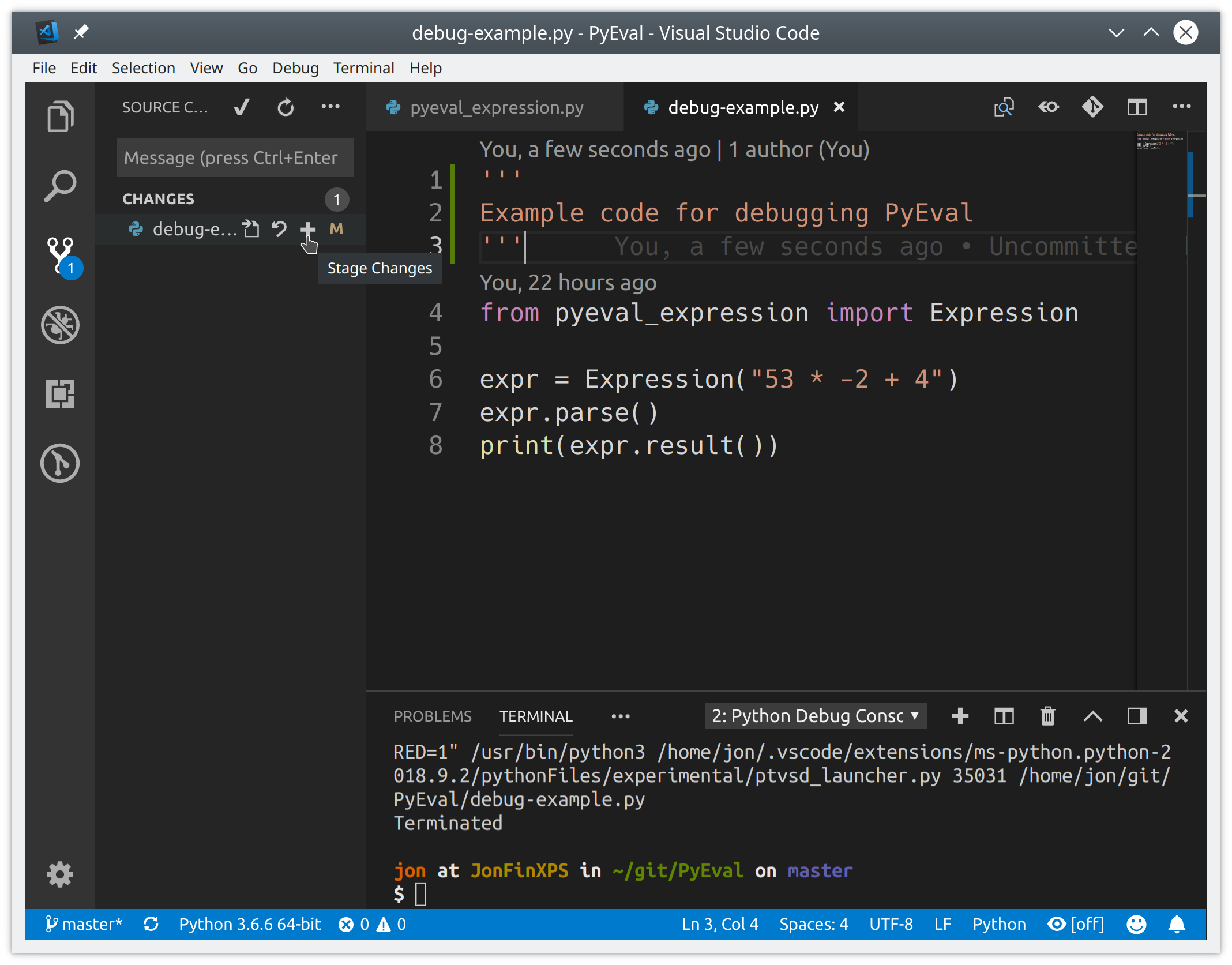

#How to troubleshoot unit tests python in visual studio code code#
Exclude all the code from a particular. Exclude all the functions generated from a particular template:ĮxcludeFromCodeCoverage(Exclusion3, L"*::MyFunction") Exclude all the functions in a particular class:ĮxcludeFromCodeCoverage(Exclusion2, L"MyNamespace::M圜lass2::*") Exclusions must be compiled as unmanaged (native):ĮxcludeFromCodeCoverage(Exclusion1, L"MyNamespace::M圜lass::MyFunction") To exclude unmanaged (native) elements in C++ code: #include Using namespace System::Diagnostics::CodeAnalysis Add the attribute to any of the following code elements: class, struct, method, property, property setter or getter, event.Įxcluding a class does not exclude its derived classes.įor example: using You might want to exclude specific elements in your code from the coverage scores, for example if the code is generated from a text template. This applies only to the ASP.NET artifacts themselves: results for any other assemblies will be combined.Įxclude elements from the code coverage results If you merge results from tests of an ASP.NET project, the results for the separate tests are displayed, but not combined. Use the Add/Remove Columns command to show the line data. If you merge a results file that has been exported and then imported, you can only view the results by lines, not by blocks. To get fully combined results, use the same build of the code, changing only the test data. If you merge coverage data from different versions of the code, the results are shown separately, but they are not combined. Use Export Code Coverage Results to save the results of a merge operation. If you want to combine exported results, you must import them first. You can choose any combination of recent runs or imported results. Use Merge Code Coverage Results to do this. Now you merge the results from the two test runs, and the report and coverage coloring view show that 100% of the function was covered. When you run the test a second time with the input "-2", you see in the coverage coloring view that the other 50% of the function is covered. Therefore, you might want to combine the results from different test runs.įor example, suppose that when you run a test with input "2", you find that 50% of a particular function is covered. In some situations, different blocks in your code will be used depending on the test data. If they have the same version of the source code, they can see coverage coloring. To send results to someone else, send either a. coveragexml file, which you could process with other tools or send easily in mail. To make results readable as text, choose Export Code Coverage Results. The coverage coloring might be incorrect if the source code has changed since the. To view results from a previous session, choose Import Code Coverage Results, navigate to the TestResults folder in your solution, and import a. The menu shows a temporary list that is cleared when you open a new solution. To view a previous set of results, select it from the drop-down menu. You can merge the results of several runs, for example from runs that use different test data. The code coverage window can also be used to view previous results, or results obtained on other computers. The results will vary if you change your test data, or if you run only some of your tests each time. The Code Coverage Results window usually shows the result of the most recent run. If some but not all code blocks in the line are exercised, it is counted as a partial line. If this is the case, and the test run exercises all the code blocks in the line, it is counted as one line.

A long block of calculation would count as a single block even if it occupies many lines.Ī line of code can contain more than one code block. Some users prefer a count of lines because the percentages correspond more closely to the size of the fragments that you see in the source code. You can also have the results displayed in terms of lines by choosing Add/Remove Columns in the table header. The number of times the block is used has no effect on the result. If the program's control flow passes through a block during a test run, that block is counted as covered. A block is a piece of code with exactly one entry and exit point. Report in blocks or linesĬode coverage is counted in blocks. Coverage results and code coloring are not automatically updated after you modify your code or when you run tests. If you don't get the results you expect, see Troubleshoot code coverage.ĭon't forget to run code coverage again after updating your code. If you're working with unmanaged (native) code, use a debug build.


 0 kommentar(er)
0 kommentar(er)
